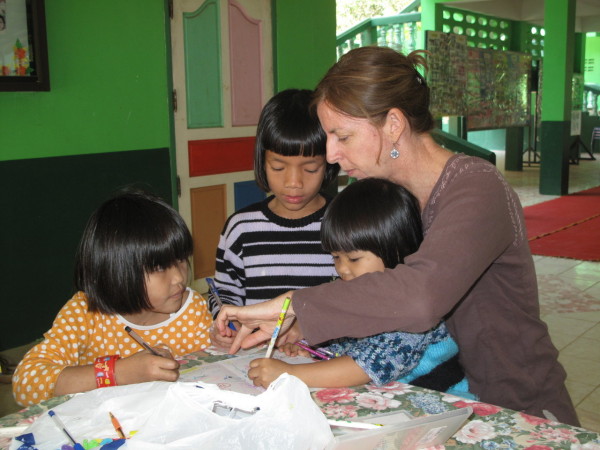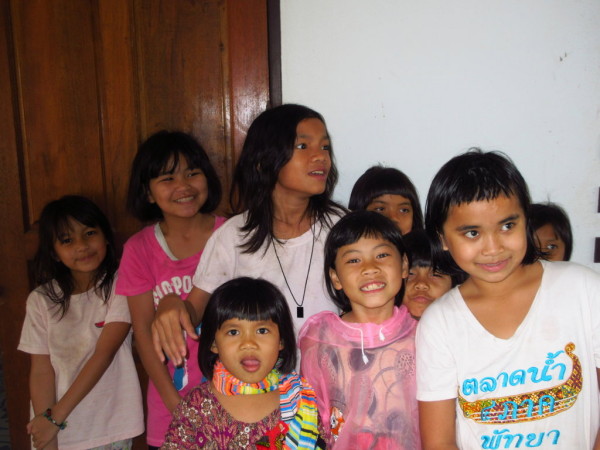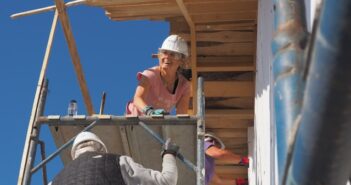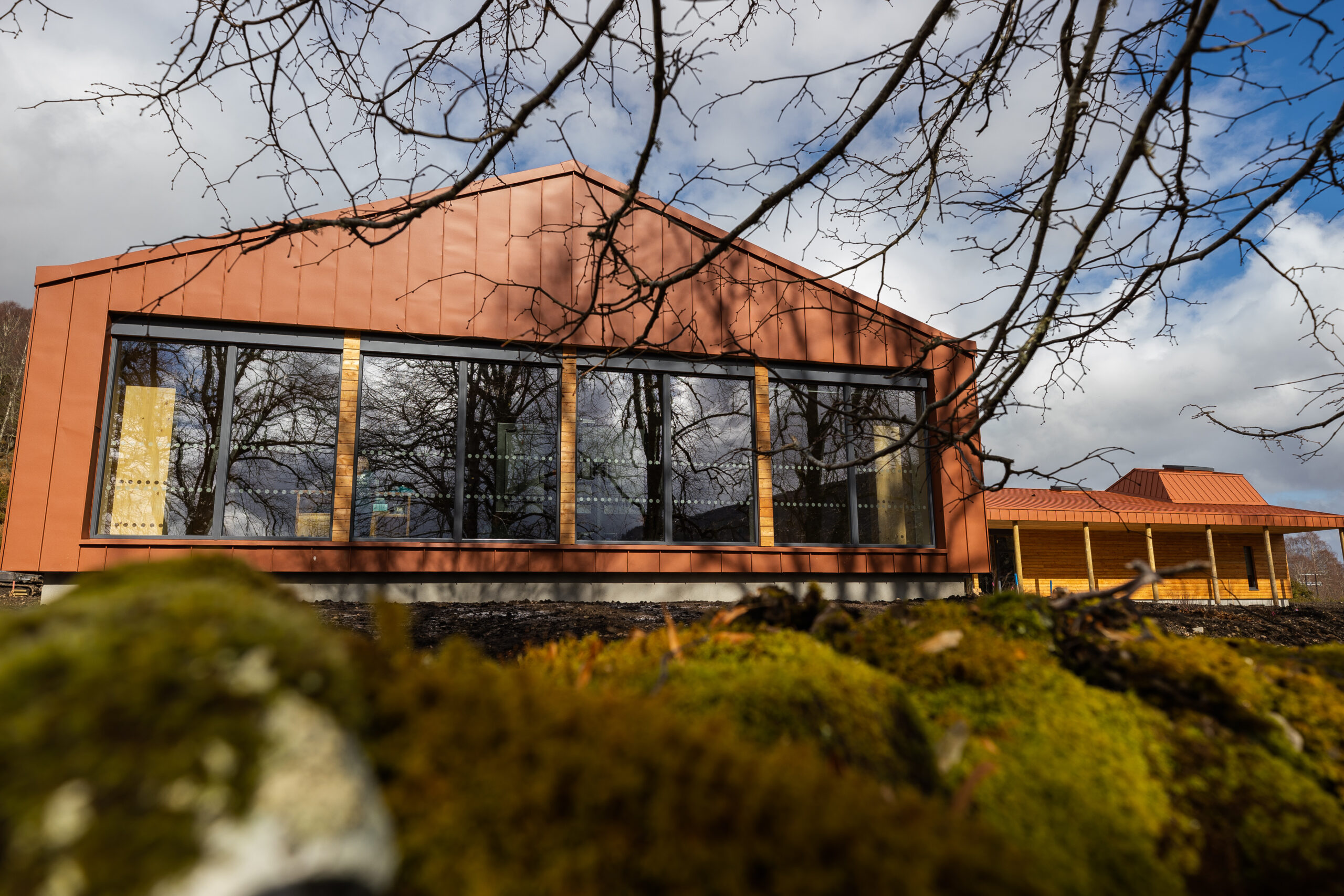Father Michael Shea is a remarkable Redemptorist Catholic priest who has worked among sick, poor and disadvantaged people in the hills of northern Thailand for the greater part of his life. In 1999 he began working with mothers and children infected with HIV or suffering from AIDS. He promised a woman who fell ill with tuberculosis and AIDS that he would care for her babies when she died. From that simple act of love and compassion has grown the most remarkable vocation of care and devotion.
Today Father Mike’s family has grown to 145 girls and boys of all ages as his work has extended to other abandoned children.
Kate Introna first went to help as a volunteer at Sarnelli House in 2002 – welcomed with open arms by Father Mike. At that time there were 25 orphans between the ages of 2 and 10. All had HIV / AIDS and none of them had started on any treatment for their disease. All were expected to die. Kate was the first health professional to provide care for them in the orphanage. She managed to start them on antiretroviral medicine which literally saved their lives. At the time, the local staff were untrained and there was the stigma and fear of the illness, so they provided little physical affection and did not become emotionally involved – probably in part to protect themselves against death and grief. Kate fell in love with all 25 of them ‘to bursting point’.
Today, Sarnelli House is still the only home for children with AIDS in the north east of Thailand. It has grown to become six homes for children in three different hamlets. The children are allowed to go to school, nearby land has been bought to subsidise food and teach agricultural skills and the place is a buzz of activity. Kate’s role has evolved to a point where she is now indispensable. She works on the website, supports the volunteers, writes funding proposals and reports, runs a weekly clinic and manages an out-reach programme.
Below she shares with us a moving story from Sarnelli House:
A journey ….
By Kate Introna, Volunteer Co-Ordinator and Health Adviser, Sarnelli House Orphanage, Northern Thailand.
This is the story of one little girl, Jan, and her journey to Sarnelli House orphanage earlier this year. She is 11 years old and lives and works with her grandparents and an older brother on a rubber plantation near Nongkhai in the north of Thailand. The family taps acres of rubber trees for a paltry wage and live in a shack in the rubber plantation, far from health care or schools.
Their house has a corrugated iron roof. The walls are made of woven grass and the floors are pressed dirt. The outdoor kitchen has no walls or roof, just some wooden scaffolding to hang up plastics bags filled with life’s belongings. There is no fridge, no stove, no sink and everyone sleeps on mats rolled up from the night before on a wooden platform.
Jan’s mother has gone with another younger daughter to find work elsewhere, and the older brother, still at home, has never been to school as he is simple and unable to talk. He can smile and laugh and it is obvious he loves his grandparents and tries to work hard for them. Jan has been sexually abused by a family member on a regular basis; for how long no one knows.
Jan soon begins to get sick with fevers, a cough and weight loss. When the grandmother can afford it, she hires a truck or any vehicle she can find to take her and her granddaughter to the local hospital. There, they merely give her some antibiotics and send her on her way. Jan does not get any better and when the cold season arrives she finds it hard to keep warm. The grandmother has to keep a strict count of her money so she can buy drinking water for the family and food, but she tries to save enough to buy milk for Jan as well as medicine from the local pharmacist. She has chickens and ducks for eggs and meat but there are dogs to be fed, a husband and two grandchildren to take care of, as well as relatives that might turn up and stay for days.
Over the next few months, Jan’s health is not improving and she is always hot or sweating: her cough is getting worse and her little stomach is swelling. On another visit to the hospital, an attentive nurse notices her condition and decides to help. Jan is taken for blood tests and x-rays. Eventually the results come back that she is HIV positive and that she has TB as well.
Jan is referred to the Thai Welfare team who try and investigate the cause of her illness and the current family situation. Jan is in need of supervised health care now, as she has been started on a rigorous regimen of anti TB and Anti Retro Viral (ARV) medications. The welfare team looks around for alternate accommodation, as access to good food, clean water, adequate shelter and nursing and medical care for Jan is essential. She is referred to Sarnelli House.
The bright pink van belonging to the welfare team takes three hours to arrive at Sarnelli House carrying Jan and her grandmother and Jan’s few belongings. Jan’s grandmother is welcomed and encouraged to stay as long as she can to help settle Jan in. However she can only stay two or three days because she must get back to care for her husband and of course, her grandson who can’t be left on his own for too long.
Because Jan is newly diagnosed with TB, she has to be quarantined from the other children living at Sarnelli House. Luckily for her, at the same time as she comes to stay at Sarnelli House another 12 year old girl, also with TB, is placed there. Miss Noo is a survivor and has a one million watt smile. She and Jan both share the room in the clinic that is designed to house any infectious children. Noo is eager to try out everything. The room has three beds and two bathrooms. There is a refrigerator and a TV. A housemother stays with the girls at night, while Miss Jai who works in the clinic Monday to Friday looks after them during the day.
Jan has to take her ARV medicine at 6am and 6pm and her anti TB medicine at 8pm – handfuls of tablets – big ones and small ones, different colours and different smells. She takes them one by one followed by a mouthful of water. Afterwards she sits still and quiet, as if willing all those tablets to go down easily and not make her feel sick or vomit. If she vomits, she has to take them all again. She bears all this patiently, never complaining, but rarely speaking.
After two weeks the girls are given the all clear and are no longer considered infectious. They attend a party held at the Joseph and Mary Hall with all the other children from Sarnelli House. A family from Nongkhai has put on noodle soup for lunch and there is dancing and music. The two little girls walk in shyly and sit at a table where there are other girls sitting and talking. The other girls soon get up and leave.
Fr Shea arrives and sees Jan and Noo alone amidst the noise and the organised chaos of serving lunch. He immediately pulls up a chair and sits with them, gets them some noodle soup and drinks, and has them responding and laughing as he teases them. Eventually his example of acceptance and love is noticed. Other children crowd around them and join in the laughter, getting to know the girls.
Even though the girls are no longer infectious, Jan must stay at the clinic a bit longer as she needs supervising with her medicine and her meals, she also needs moisturising lotion rubbed into her dry itching limbs, and lots of tender loving care. Noo stays on as well refusing to leave Jan alone or go to St Patrick’s House to live with the other girls.
During the day they wander over to the empty playground at Sarnelli House and sit on the swings under the shade of the big mango trees. When the boys arrive home from school, Noo is over like a shot to play with them. Jan follows but says little and gently smiles at her friend’s antics.
Visits to the hospital continue for Jan with blood tests,x-rays, examinations all to check that she is responding to her medications. Finally she is considered strong enough to go and live with the other small girls at St Patrick’s House under the care of Grandmother Wan.
Noo now agrees to accompany her friend.
They are a bit nervous to be leaving the security of the clinic but when they find out they are going to be resuming school, they look forward to the move. After some organising, both girls are kitted out in new school uniforms, shoes and school bags and clamber on board the school truck to school at 7am every morning. Noo takes to school as everyone expected her to, and comes home regaling all with her tales.
Jan is not so communicative and after a while it turns out she is exhausted and she is falling asleep at her school desk. She is also far behind the others in her class and there is no extra help as the teacher already has her hands full with 30 other students.
Despite Jan’s protestations, going to school is stopped and she stays home during the day with grandmother Wan. Jan is not yet able to join the other girls riding their bikes or going swimming as she is simply too fatigued. She also still has problems keeping her medicines down and misses her grandmother. Finally after several months of living at Sarnelli House, Jan’s composure breaks and she cries and cries, begging to go home again. Her grandmother visits her and understands that this is the best place for Jan to be, where she has access to all the health care and supervision that she needs. But it doesn’t stop Jan from pleading with her to take her home. It has been such a big wrench to be uprooted from her home, however poor, dirty and inadequate it is.
Her grandmother stays a few more days with her and Jan settles down and accepts that she has to stay while she is unwell. Jan has good days where she is feeling stronger and bad days where she cannot keep her tablets down and vomits them up. Soon the bad days outweigh the good ones and she is taken to the hospital in Nongkhai and admitted for investigations. Her grandmother is contacted and comes and visits her and Jan’s face lights up. After a week Jan is discharged home from the hospital with few causes found for her nausea and vomiting. She is taken to the University Hospital in Khon Kaen where after more tests they change one of her anti TB medications and check for liver infections. Regular monthly appointments follow and Jan gradually starts to regain her strength. Her face becomes fatter and her skin clearer, she is able to take her meals and she develops a definite penchant for sweets that has to be watched as she would eat them all day if she could. No liver infection is detected, but Jan must continue on her anti TB medication for a full twelve months and her ARV medications for the rest of her life.
The gradual settling in to Sarnelli House for sick and abandoned children is a traumatic time that they eventually overcome. However grim and brutal their previous experience or domestic situation, it’s all they have known. Like Jan many of these children have attachments to a family member or a place, and they do not all have the confidence to stride in to a new environment and make it their own.
Afterwards when they are healthy and have made friends, they are regular noisy, fun loving and happy kids – running up for hugs, eager to give all the news from school and full of energy. When one sees the children like this, participating in life so fully, it is easy to forget the difficult and often heart rending time of adjustment. Jan continues to go through hers, and while her health is precarious and her losses multiple, the love and support of the other girls, the housemothers and visitors and staff continue to support her.
Thai Children’s Trust UK has been working with vulnerable children in Thailand for over 30 years. The charity supports various projects across Thailand that care for children with HIV and AIDS, orphaned and abandoned children, street kids, migrant children, children with disabilities and exploited women.
Find out more about their work and how you can get involved by visiting their website.







1 Comment
Pingback: How a promise led to the start of a family for abandoned children in Thailand | Leap Daily